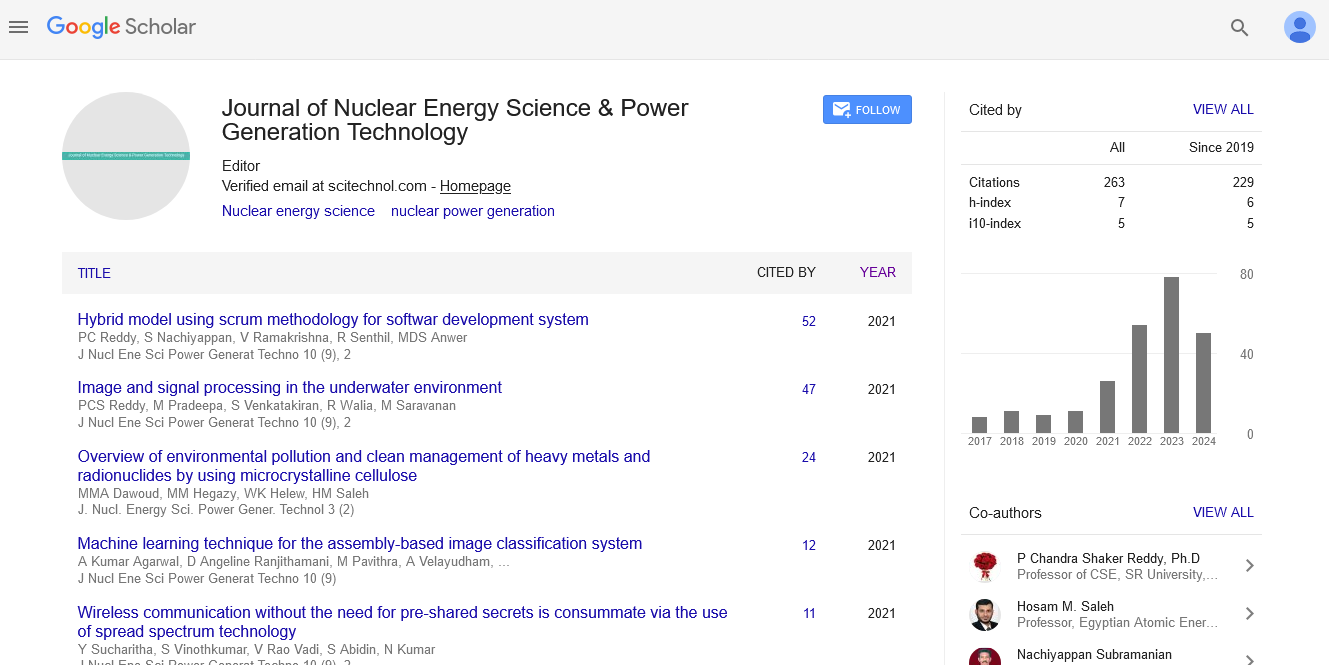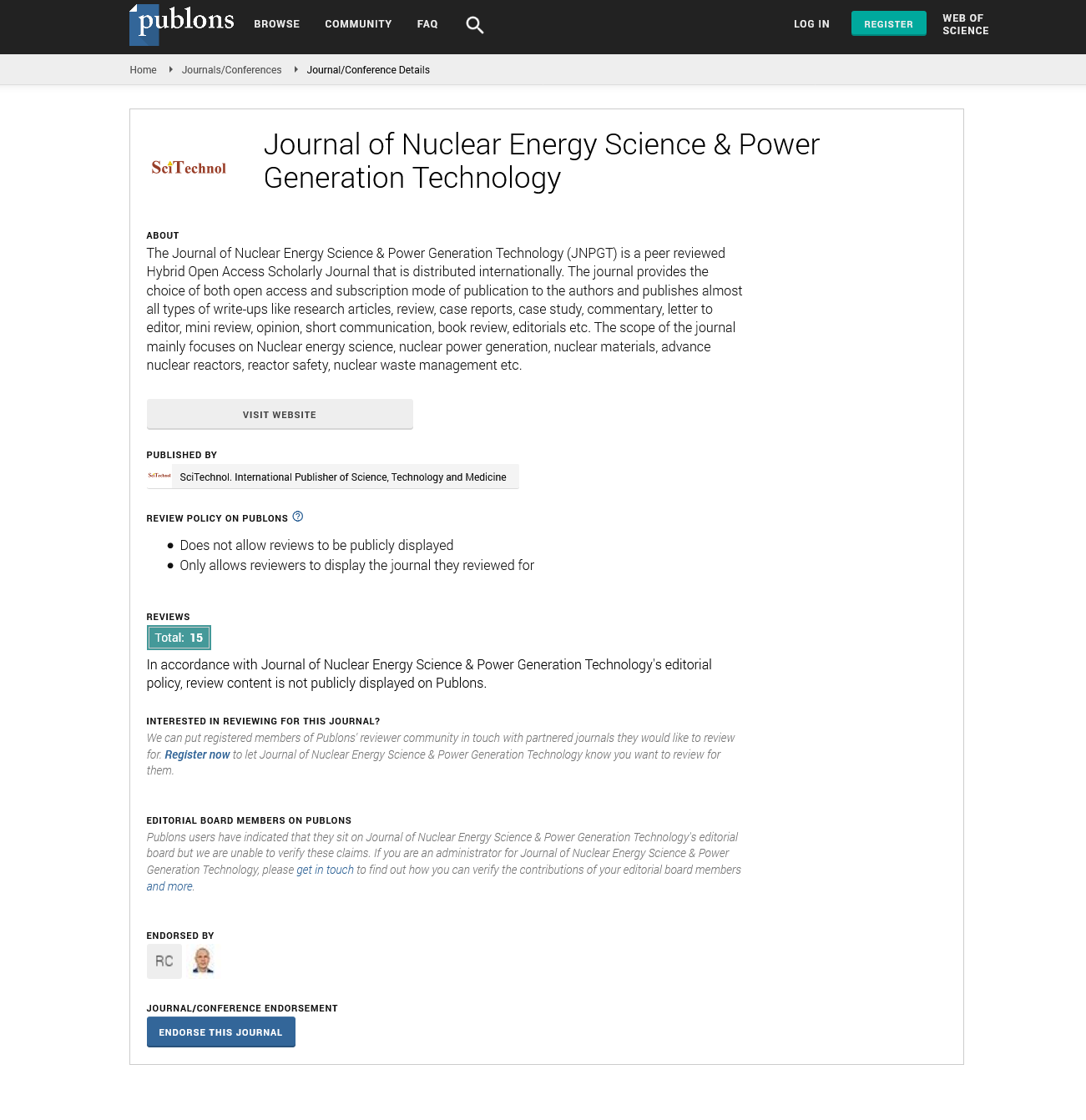Perspective, J Nucl Ene Sci Power Generat Technol Vol: 13 Issue: 3
Advanced Strategies in Gas Turbine Maintenance and Management
Depsio Klin*
1Department of Low-Carbon Energy and Power Engineering, China University of Mining and Technology, Xuzhou, China
*Corresponding Author: Depsio Klin,
Department of Low-Carbon Energy and
Power Engineering, China University of Mining and Technology, Xuzhou, China
E-mail: depsio_klin@gmail.com
Received date: 26 April, 2024, Manuscript No. JNPGT-24-140226;
Editor assigned date: 29 April, 2024, PreQC No. JNPGT-24-140226 (PQ);
Reviewed date: 14 May, 2024, QC No. JNPGT-24-140226;
Revised date: 21 May, 2024, Manuscript No. JNPGT-24-140226 (R);
Published date: 29 May, 2024, DOI: 10.4172/2325-9809.1000393.
Citation: Jina T (2024) Advanced Strategies in Gas Turbine Maintenance and Management. J Nucl Ene Sci Power Generat Technol 13:3.
Description
Gas turbines are critical components in various industries, including power generation, aviation, and oil and gas. Their efficiency, reliability, and longevity are paramount for operational attainment. Effective management of gas turbines involves a range of practices, from routine maintenance to advanced monitoring techniques. This delves into essential strategies for optimizing gas turbine performance and ensuring their reliable operation. Routine maintenance is the basis of gas turbine management. It involves scheduled inspections, cleaning, and replacement of parts to prevent wear and tear from intensifying into significant issues.
Regularly scheduled inspections of critical components such as blades, rotors, and combustion chambers help detect early signs of damage or wear. Non-destructive testing methods, like ultrasonic and radiographic testing, are often employed to identify internal flaws. Fouling and deposits on turbine blades and other parts can degrade performance. Regular cleaning, including both on-line and off-line washing techniques, helps maintain efficiency and extend component life. Timely replacement of worn-out parts, such as seals, bearings, and filters, prevents minor issues from causing major breakdowns. Using Original Equipment Manufacturer (OEM) parts ensures compatibility and reliability.
Advancements in technology have enabled more approaches to gas turbine management, particularly condition monitoring and predictive maintenance. Monitoring the vibration signatures of gas turbines can provide early warning of mechanical issues. Unusual vibration patterns can indicate imbalances, misalignments, or bearing failures. Infrared thermography helps in detecting hot spots and thermal anomalies, which could signify potential problems like insulation breakdown or combustion inefficiencies. Regular analysis of lubrication oil can reveal the presence of contaminants and the condition of the oil, helping to prevent lubrication-related failures. Using data from various sensors, predictive analytics can forecast potential failures and maintenance needs. This method minimizes downtime by scheduling maintenance activities based on actual equipment condition rather than fixed intervals.
Maximizing the efficiency and output of gas turbines is a key management objective. Ensuring the use of high-quality fuel can prevent deposits and corrosion, which affect performance. Regular fuel testing and treatment are essential. Clean air filters and properly maintained air intake systems prevent fouling and ensure optimal combustion. Regular tuning of control systems can optimize fuel-air mixture and improve efficiency. Advanced control algorithms can adapt to changing operational conditions to maintain optimal performance.
Gas turbine operators must navigate a complex landscape of environmental regulations and standards. Continuous monitoring of emissions such as NOx, CO, and SOx ensures compliance with environmental regulations. Advanced emission control technologies, like selective catalytic reduction and dry low NOx burners, help in reducing harmful emissions implementing noise reduction measures, such as acoustic enclosures and silencers, minimizes environmental impact and complies with noise regulations.
Conclusion
Effective gas turbine management is a multi-faceted effort that combines routine maintenance, advanced monitoring, performance optimization, regulatory compliance, and personnel training. By implementing these strategies, operators can enhance the reliability, efficiency, and longevity of their gas turbines, ensuring they meet the demanding requirements of modern industry. As technology continues to advance, adopting innovative management practices and sustainable in the evolving energy landscape. Well-trained personnel are essential for effective gas turbine management. Ongoing training on the latest maintenance practices, safety procedures, and technological advancements ensures that personnel are equipped to handle complex turbine systems. Regular assessments and certifications ensure that operators and maintenance staff maintain high competency levels.
 Spanish
Spanish  Chinese
Chinese  Russian
Russian  German
German  French
French  Japanese
Japanese  Portuguese
Portuguese  Hindi
Hindi 

